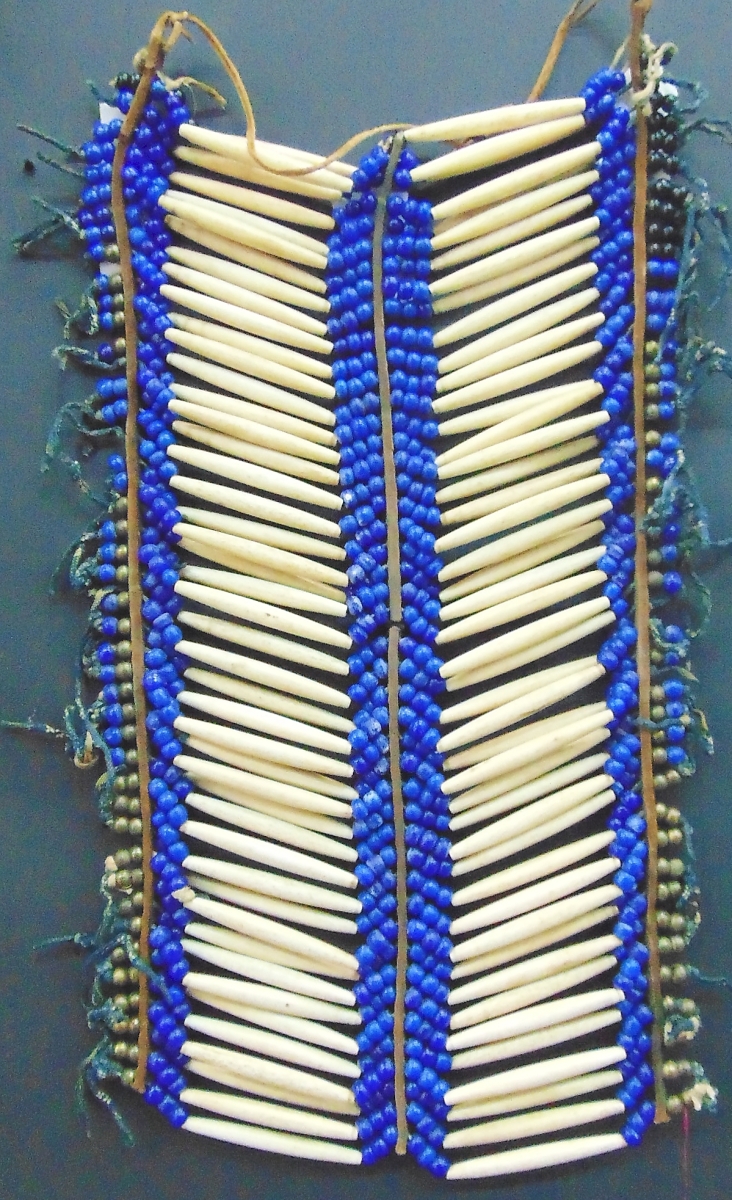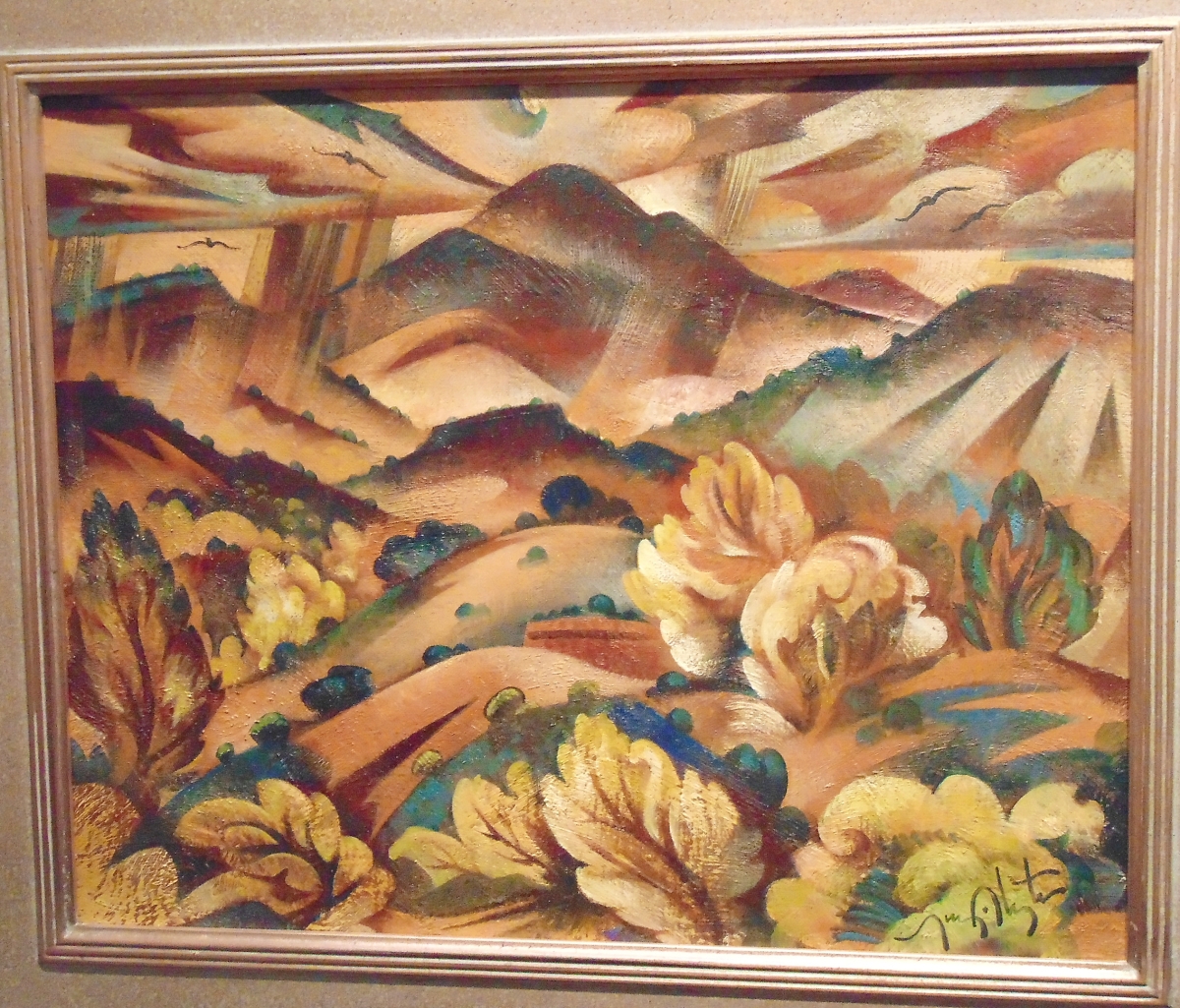
Canyon Road Gallery owner Michael Smith, Santa Fe, supports the Wounan People’s effort to preserve their tribal lands in the Panamanian rainforest by helping sell their exquisite baskets.
Review and Photos By Walt Borton
SANTA FE, N.M. – The Antique American Indian Art Show, in just its seventh year, is one of a kind. Nowhere else in the world do collectors and galleries specializing exclusively in historic Native American art come together annually to buy, sell and trade.
When all 2020 Santa Fe August events were cancelled by the pandemic, there was inevitable concern for this relatively young and consequently fragile event. Old hands in the art market know that a year “dark” or a change in venue can do serious damage to even a well-established show.
So walking through the door of El Museo Cultural on Santa Fe’s Rail Yard for opening preview and being greeted by a First, Second and Third phase Navajo chief’s wearing blanket at Red Mesa/Jeff Veracek’s booth should have been proof enough that things were on track. But on the show’s first aisle, optimism was bolstered by the very best; basketry and weavings from Terry DeWald, jewelry and ceramics from Bob Gallegos, attire and adornments at A&E Tribal and pottery instantly recognizable as the work of major ceramics artists in the corner hosting John C. Hill Antique Indian Arts and John Krena’s Four Winds Gallery.
Meandering the show, which ran August 17-20, familiar faces from substantial local and national galleries provided even more proof. Lusher Fine Arts was onboard, as were Barry Friedman and Terry Schurmeier. Erich Erdoes and Susan Swift were side by side as they are at the foot of Canyon Road. The jewelry at Miles & Miles dazzled, and Mark Blackburn’s booth, as ever, contained more than a few traffic-stoppers.

John Morris, who with Kim Martindale produces Objects of Art Santa Fe and The Antique American Indian Art Show.
James Flury and Bill Henderson from Seattle, renowned specialists in Northwest Coast material, attracted attention with a sidewall display of objects few knew even existed. Several lightly tattered photographs in glassine envelopes at first seemed out of place. But their descriptive placard justified their presence, identifying them as “the plate covers or plate envelopes” for the copper photogravure plates of the images in Edward Curtis’ The North American Indian. Their inexpensive paper and casual printing yielded images sharper and almost more captivating than the meticulously printed photogravures and gold tones of the rare originals. Made to protect and identify original Curtis plates, at only $650, these are invaluable artifacts. To date, only the plate covers from Portfolios 3 to 20 have been found.
Though the show is decidedly smaller than in the past, with only 34 exhibitors, the producers succeeded in mounting a visual experience both engaging and educational. The entire back wall of the exhibit hall presented a gallery of significant weavings, dominated by a very rare Mother Earth Father Sky Navajo Germantown sandpainting weaving belonging to Terry DeWald.
Show stalwarts included Buffalo Barry’s always eclectic collection, Pook a Moon and Todos Santos’ wide array of affordable objects and Barry Friedman’s historically important, and comforting, trade and camp blankets.
Sales reports were solid, highlighted by major transactions like the important large Mesa Verde olla, circa 1200 CE, sold by Art Blackburn and a rare Lakota girl’s dress, originally part of the JH Sharp’s Collection by AE Tribal Antiques.
Weavings remain a highly popular component of the Native American art market, which held true for Terry DeWald, Kim Martindale and Chip Neschke, all of whom sold numerous textiles.
Like their Objects of Art Show, producers John Morris and Kim Martindale added a virtual edition, which featured important galleries still not traveling, including John Molloy, New York; Mark Sublette’s Medicine Man Gallery, Tucson; and Richmojoe Gallery, Vancouver. Ted Trotta and Anna Bono also showed only virtually since they are not only still house hunting in Santa Fe, but busy with the joys of being first-time grandparents.

“On the Canadian River,” a photogravure plate cover for copper plate 659, from which this image in The North American Indian, Portfolio 19, The Indians of Oklahoma, was printed, offered at $650 by James Flury and Bill Henderson, Albuquerque, N.M.
The Antique American Indian Show is unique not just because it is the only event of its kind, or because its participants feel very much like family. The show is unique because it was purposefully shaped, and scheduled, to bring an historic perspective to the internationally imported Santa Fe Indian market which always opens just as this show closes.
The Antique American Indian Art Show was imagined, established and is still produced, by two non-Native individuals who both, since their teens, have been passionate about Native American art, artistry and culture, and took the risk to launch a new venture in Santa Fe before the city, or the art market, were fully recovered from the Great Recession.
One, John Morris began studying Native American culture and collecting as a boy, enduring the life of a “service brat” attending three different schools in three different states for 6th grade. In his college years at Carnegie Tech, he worked for the Pittsburgh Bi-Centennial Commission to assure the authenticity of the Native American attire worn during their celebration. And when the production team for the fabled Woodstock Music and Art Fair needed artists, John flew to Santa Fe to invited 25 native artists, among them, Kevin Redstar, Dale Bird and Billy Soza, and to join the fair. Thirty years later, stepping back from rock ‘n’ roll concerts, he consulted to several major entertainers on their personal Native art collections before producing his first antiques shows.
The other, Kim Martindale, first fell in love with Native American weaving at the famed Rose Bowl flea market as a young teen, and by 16 was show-runner for the Don Bennet shows that put Santa Fe on the map as a major Western art market. His passion for the preservation of important Native American material led him to build an impressive collection of textiles, ceramics and Katsina, to chair the American Tribal Art Dealers Association and to produce major Native American art and antiques events in San Francisco, Los Angeles and New York, and ultimately, with John Morris, to establish this show.
It has been an unsettling 18 months for all of us. Each has lost establishments we cherished, institutions we revered and individuals we loved to this global catastrophe. So today’s small triumph, every survival, every success is especially valuable. Two years ago, this writer wrote that the Antique American Indian Show was destined to fulfill great promise. Today, he is both relieved and pleased to note that it remains so.
For additional information, www.antiqueamericanindianartshow.com, 805-340-0384 or 310-901-6805.

_charlie_schenck_l(l).jpg)



















